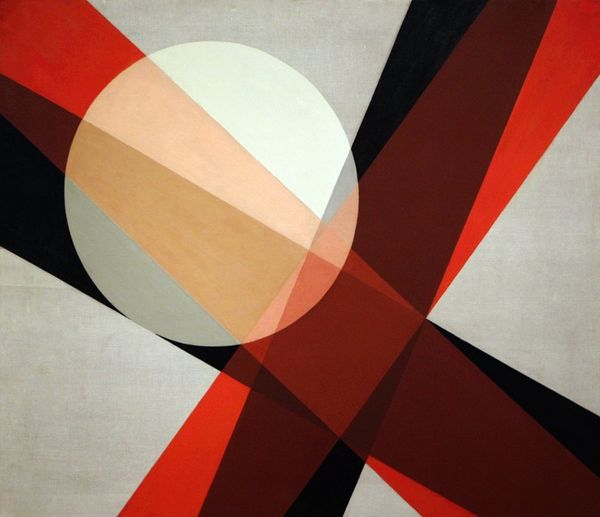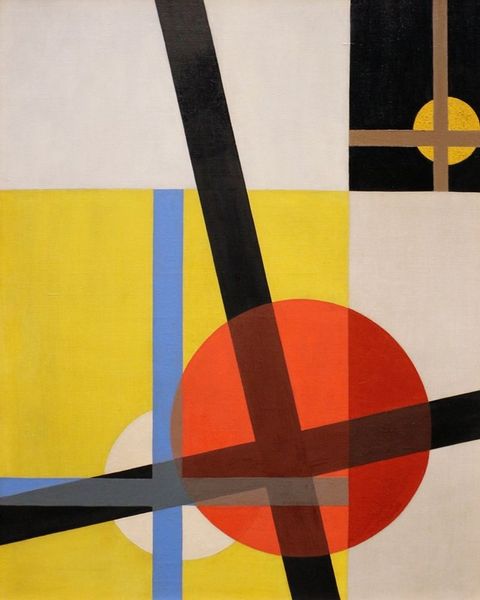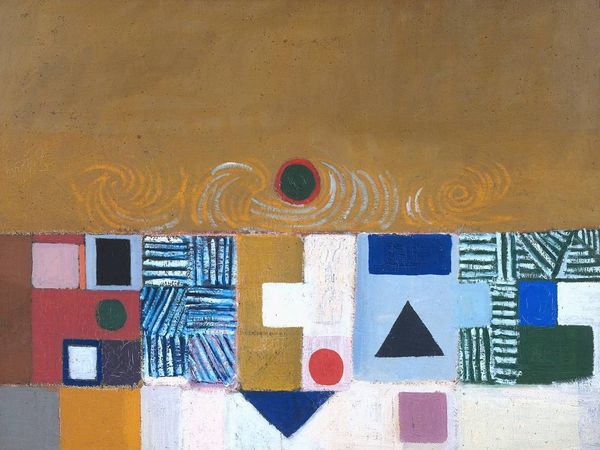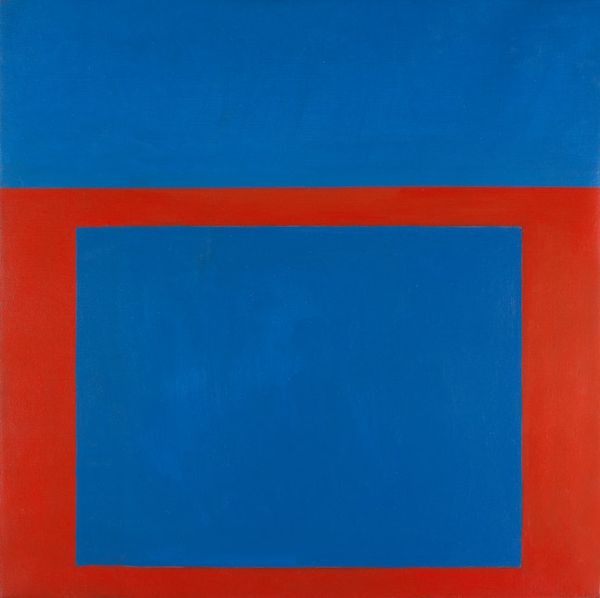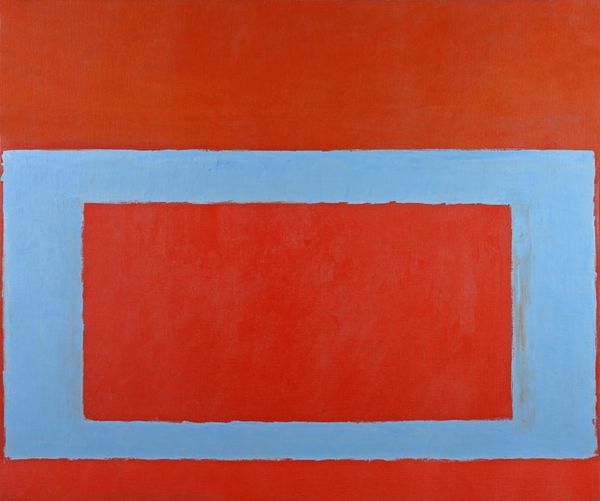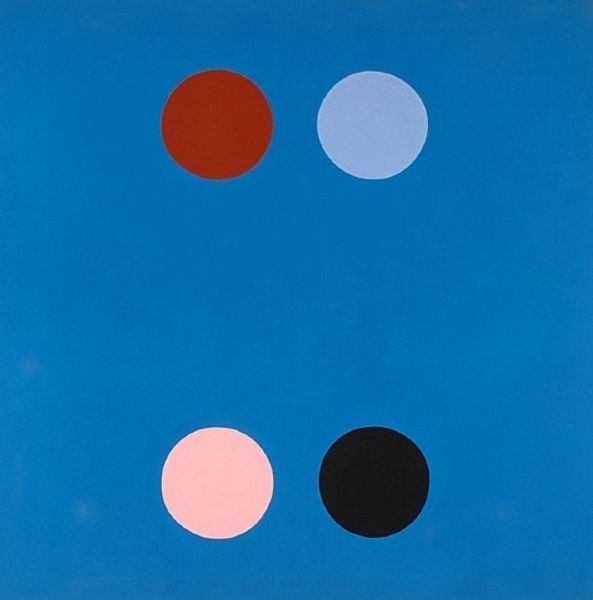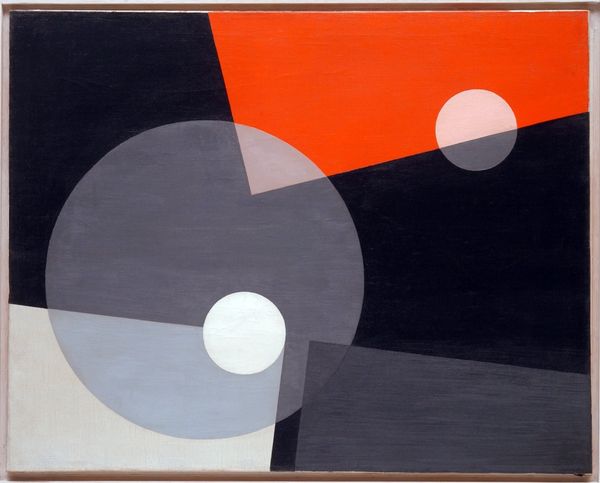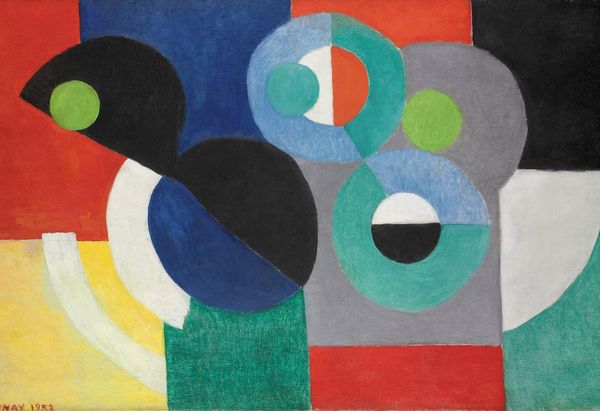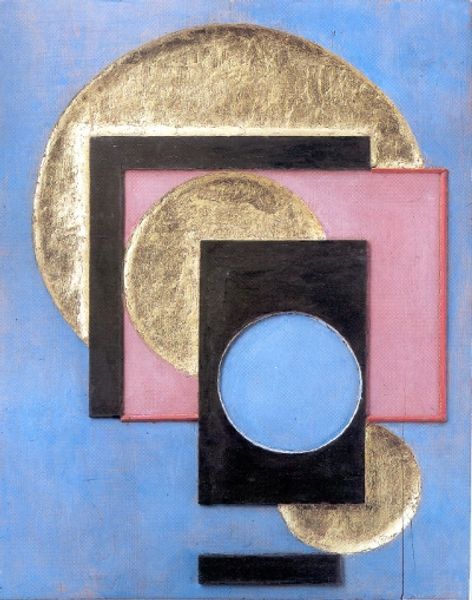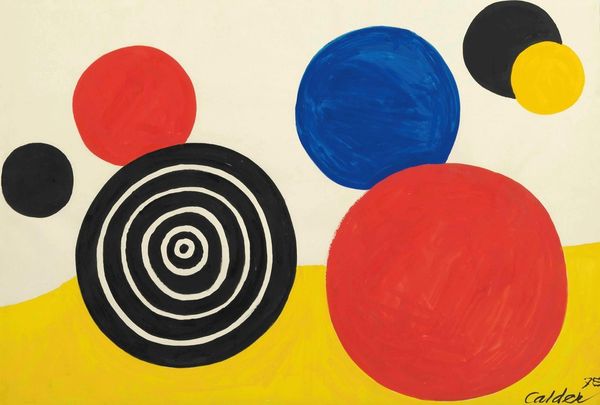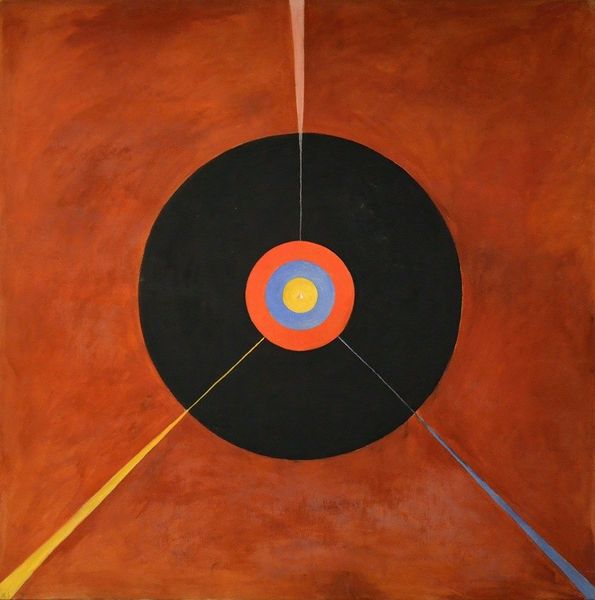
Copyright: Public Domain: Artvee
Editor: This is Hilma af Klint’s, "Group IX,SUW, No. 17. The Swan, No. 17", painted between 1914 and 1915 using oil paint. It has a kind of target-like composition, divided down the middle. What do you see in this piece? Curator: For me, it is interesting to note the context of its making – pre-World War I Europe. There was a widespread upheaval of social structures and material conditions during this period, and I read af Klint’s piece in that context, in how it uses simple forms to challenge the established definitions of fine art itself. Editor: How so? Curator: Well, the oil paint, traditionally associated with high art, is here deployed in an almost diagrammatic fashion. This removes the artist's hand in favor of what might seem like purely symbolic gestures, or at least an appearance of simplicity in contrast with the more academic or classically realist approaches of the period. Look at how the materials and colors work, to convey complex, spiritual concepts without the need for recognizable figures. Editor: So you’re saying she’s elevating materials and production to be more than just craft? Curator: Exactly. Af Klint's non-objective paintings question the established notions of "art" versus mere production, hinting at a deeper interrogation of societal structures, beliefs and artistic canons prevalent at the time. The simplicity and labor involved almost makes it question how society defines the "value" of art. Do you notice that interplay too? Editor: I see what you mean! Thanks, this changed the way I see this artwork now! Curator: Indeed, recognizing art as work encourages us to think of materials and making as more than means to an end; it is part of cultural production itself.
Comments
No comments
Be the first to comment and join the conversation on the ultimate creative platform.
